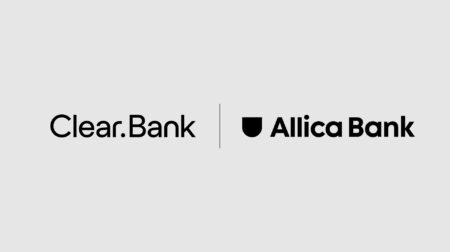BaaS Governance: lessons from leaders at Money20/20 Europe

A few weeks ago, I had the pleasure of joining three amazing senior female leaders for a discussion on Banking as a Service (BaaS) at Money20/20 Europe.
Lynda Strutton, Chief Operating Officer at Tribe Payments, Dr. Verena Thaler, Chief of Staff at Raisin, and I, aided by our excellent moderator, Sarah Kocianski, dissected the growth of BaaS, governance and how the market is evolving.
In the UK and Europe, BaaS is a popular yet loosely defined term. Fintech players, non-bank entities, BaaS firms and Embedded Banking providers are all part of the transformative model that is decoupling the front-end customer experience from the underlying core applications.
The model has proven attractive to customer-facing brands, primarily in financial services, to leverage an array of services to build out an offering, from a full banking service to single products embedded in customer journeys.
However, the ambiguity around BaaS and the complexity of the ecosystem, with diverse types of firms involved has led to the term being stretched to encompass services such as open banking, card platforms and other API (application programming interface) services. And that, in turn, has created a misalignment of expectations, leaving the customer under-serviced or not receiving the level or type of service they need, as well as creating compliance issues.
Add in more recent issues such as Wirecard and Silicon Valley Bank and the market is now examining deposit risk, and differences between safeguarded and insured funds when using an EMI (electronic money institution) offering BaaS compared to a fully licensed banking provider.
As Lynda Strutton from Tribe Payments explained it may seem like common sense but particularly for earlier stage firms, the best way to avoid those issues is collaborating with a partner as you design a service using a BaaS provider.
“The regulatory compliance of business model is so essential. You should work with your partners in the value chain, particularly any underlying provider, to facilitate the discussions with the regulator to have confidence that you are going down the right path and that your business model is set and future proofed.”
With fintech firms increasingly reliant on their BaaS providers to speed time to market and meet compliance demands, the clarity of who is responsible in the service chain has been bought into focus. As these fintech firms scale and look to offer more complex services, BaaS providers are struggling to keep up.
The effect of this was shown in research we commissioned last year “Confusion, cost, and compliance: The bifurcation of BaaS and Embedded Banking” revealed that 40% of fintech firms had experienced service disruption, 33% had lost customers, and 20% had faced intervention by the regulator due to BaaS issues.
While the discussion reinforced the notion that not all BaaS is created equal and with so many flavours of BaaS and different definitions, it soon moved on to how the industry could, collectively, try to create more consistency and better outcomes for all in the market.
The underlying model of working with a partner to provide banking services has moved from what was defined as agency banking and the provision of bank accounts, and morphed into BaaS which spans a wider range of banking services. That, in turn, is now evolving into Embedded Banking.
Raisin’s Dr. Verena Thaler commented that some of the problems were a byproduct of the undefined roles and responsibilities, where the customer was under the impression its BaaS provider could or should be performing certain tasks.
“It can be difficult for the servicing bank to have full visibility of what your business is doing. That’s why it is so important to clear how you work together, particularly so you’re prepared for situations where something goes wrong, and you need to act quickly,” she explained. “It sounds obvious, but you gain the clarity by having everything documented and agreed so whatever occurs you collectively have a blueprint for who does what and when.”
We also examined the role of BaaS providers in the end-to-end service delivery and governance responsibilities. So, what does good governance look like and how can it be implemented? There’s no one right answer but more a case of ensuring that your BaaS provider is a truly collaborative, supportive partner to ensure the best outcome for clients and their customers.
“The challenge is in balancing the regulation and adhering to the rules with the end user experience. That is down to the relationships you build and the trust that comes from that,” noted Lynda Strutton from Tribe Payments. “We're working very closely with our partners such as ClearBank that are trying to tie all the elements together and have an open and ongoing dialogue.”
Raisin’s Dr. Verena Thaler added: “We view it as being a relationship with your banking provider that goes beyond the actual service. So, the alignment on purpose, values and culture. It also relates to how they approach regulatory standards and maintain them so that we can maintain our customers’ confidence.”
It seems inevitable that regulators will be paying more attention to BaaS. We have already seen them step in to try and clear up confusion around how non-bank entities, such as EMIs, are positioning themselves. They have also stepped in where clear and significant failures have been identified.
The panel agreed processes and controls will continue to attract regulatory attention. However, there's a huge amount of complexity in the BaaS market, so whatever happens in terms of clarity over roles and responsibilities will need to recognise that and look forward to how the market is going to evolve over time.
As Raisin's Dr Verena Thaler summarised: “We’re undoubtedly going to see more consumer brands across many sectors looking to offer these types of services. That will require providers who can support those types of institutions who perhaps lack the financial market knowledge and sophistication of say a fintech.”
The panel concluded with a consensus that it would be useful to have more guidance from the regulator regarding what all parties involved in the provision of BaaS need to do to ensure good outcomes for consumers and good outcomes for the market as a whole. That’s likely to take the form of regulation for providers that will clarify the roles and responsibilities of each party.
As Sarah Kocianski noted in her closing remarks, the result should be “increased clarity and reliability...and the foundation for the next phase of BaaS’ evolution, building on the early promise for any type of firm to deliver customer-centric financial services to the market.”
Authored by Emma Hagan, Chief Risk and Compliance Officer at ClearBank


